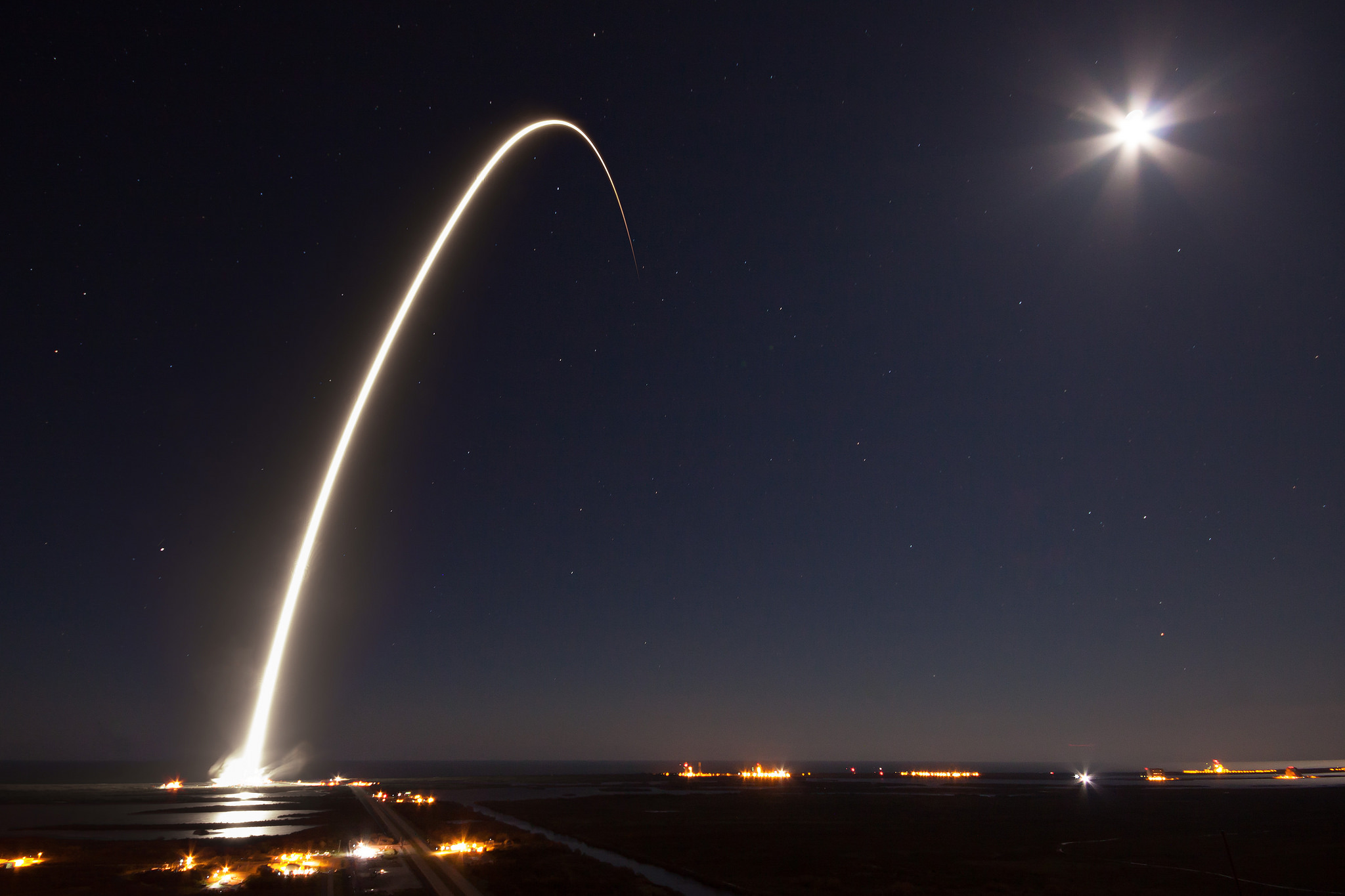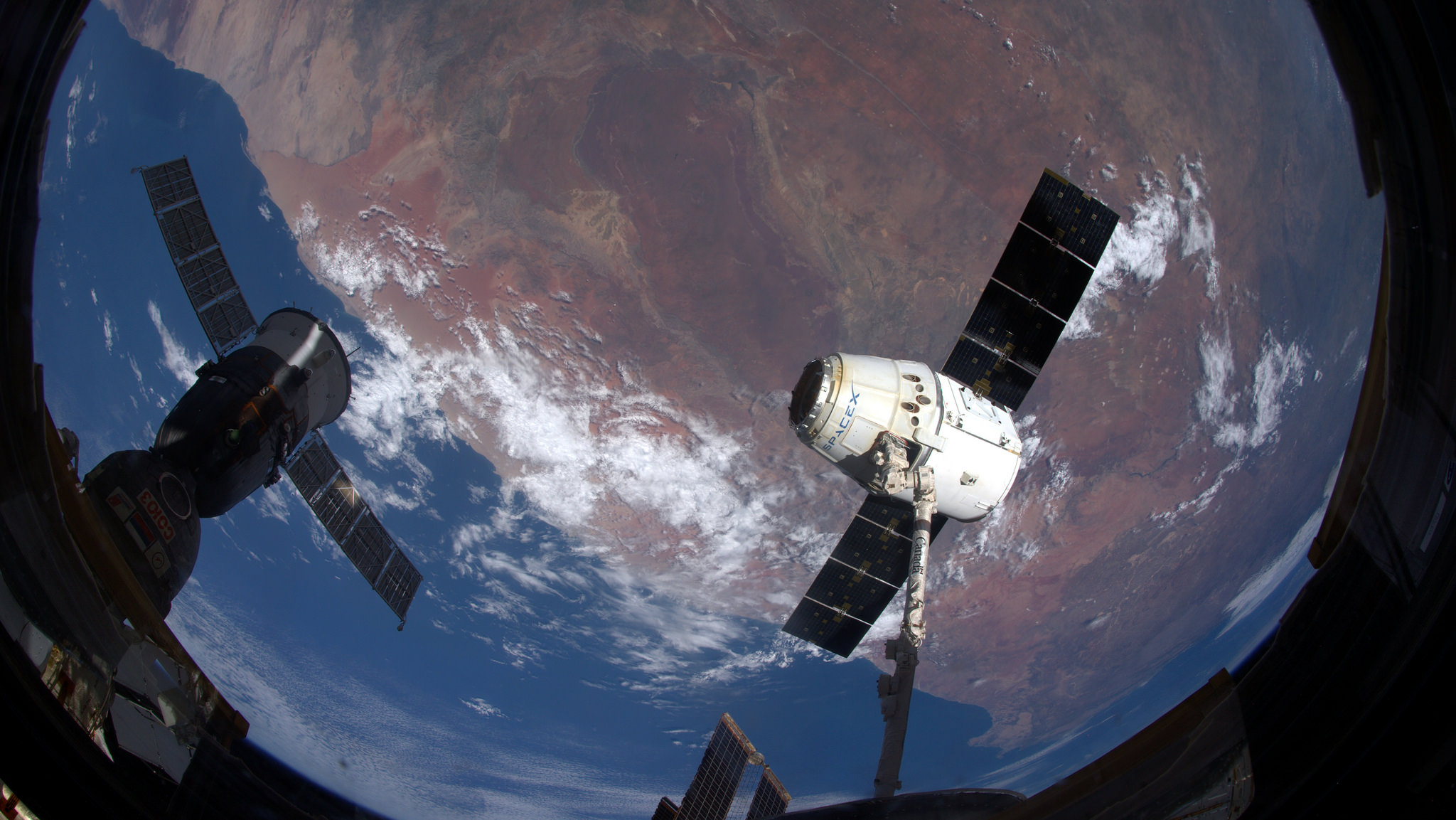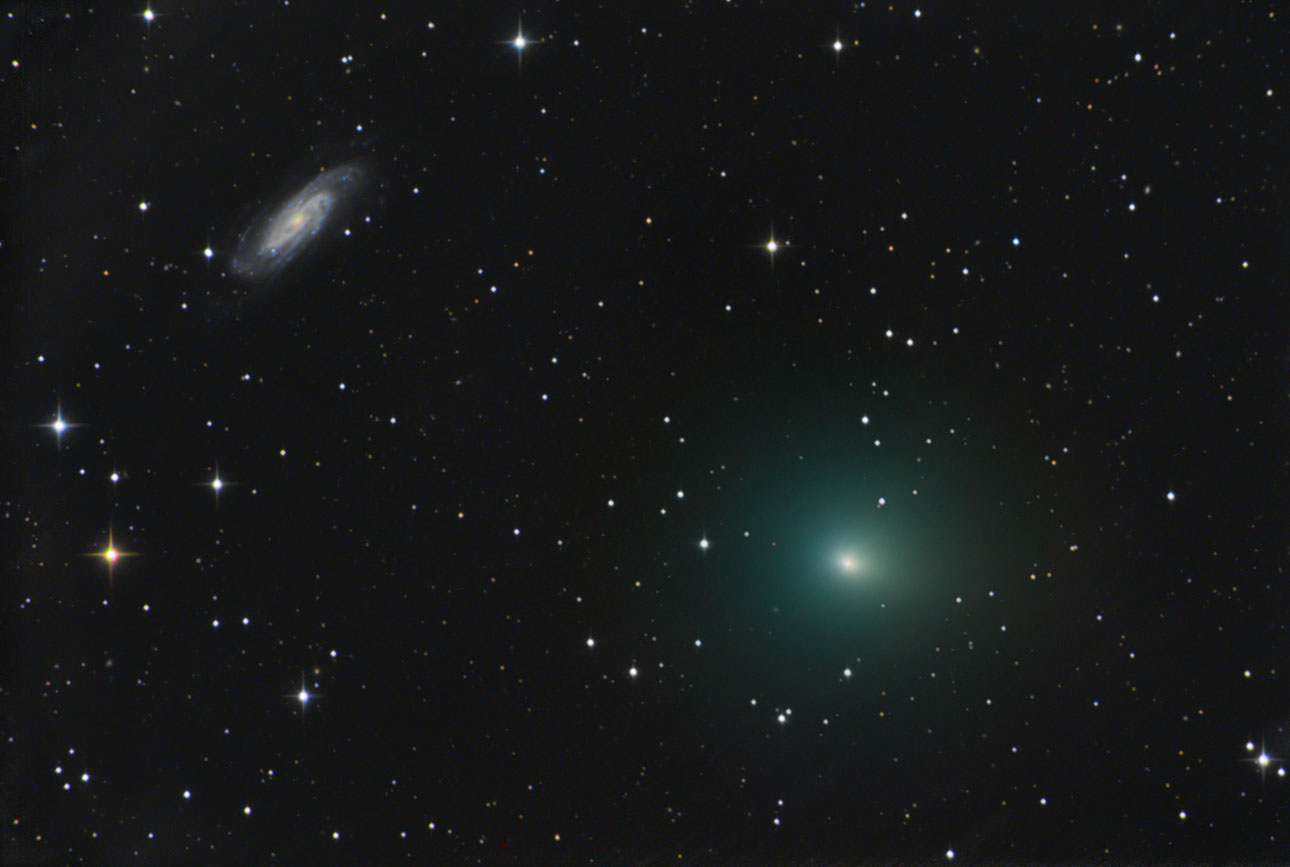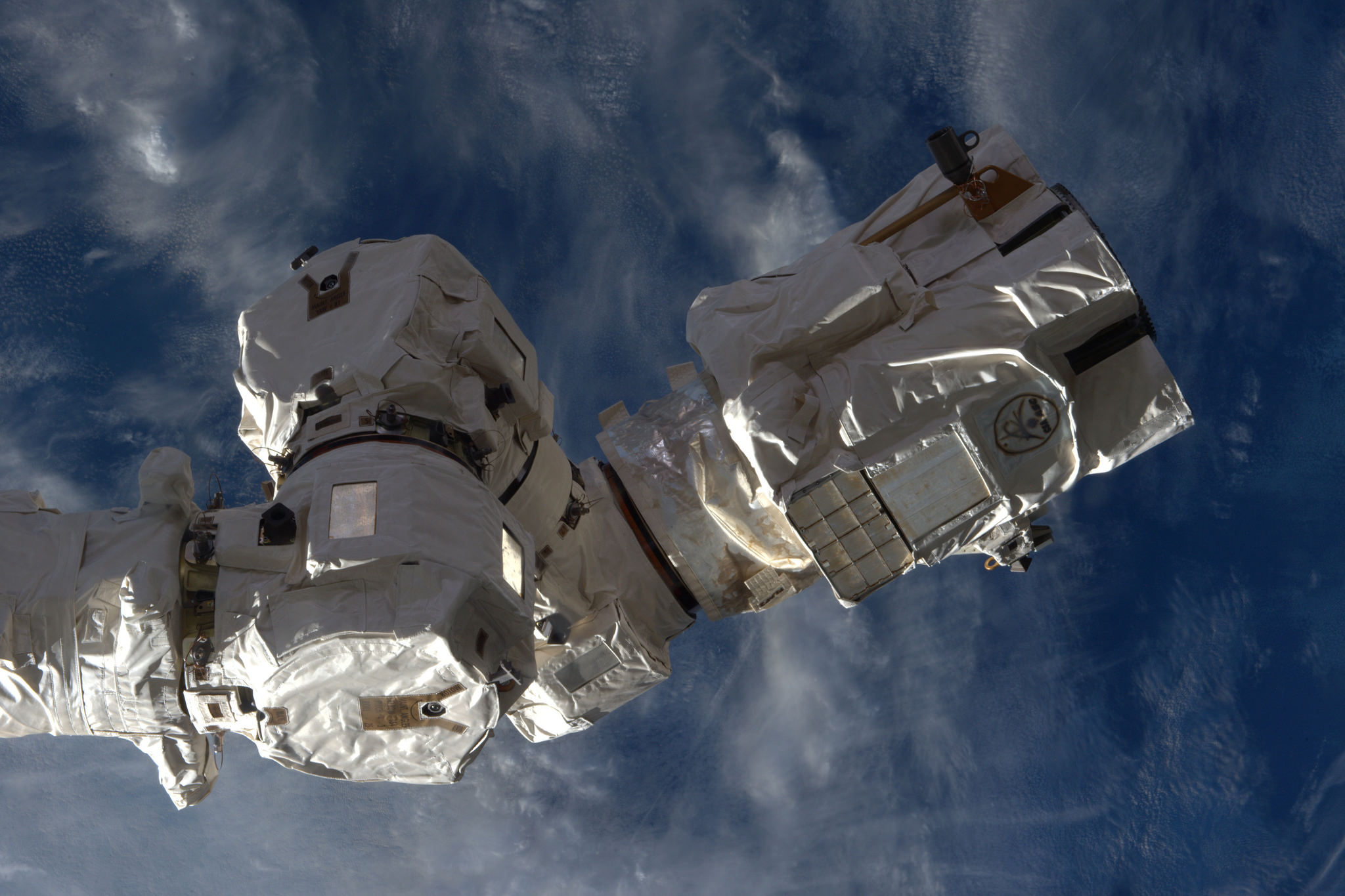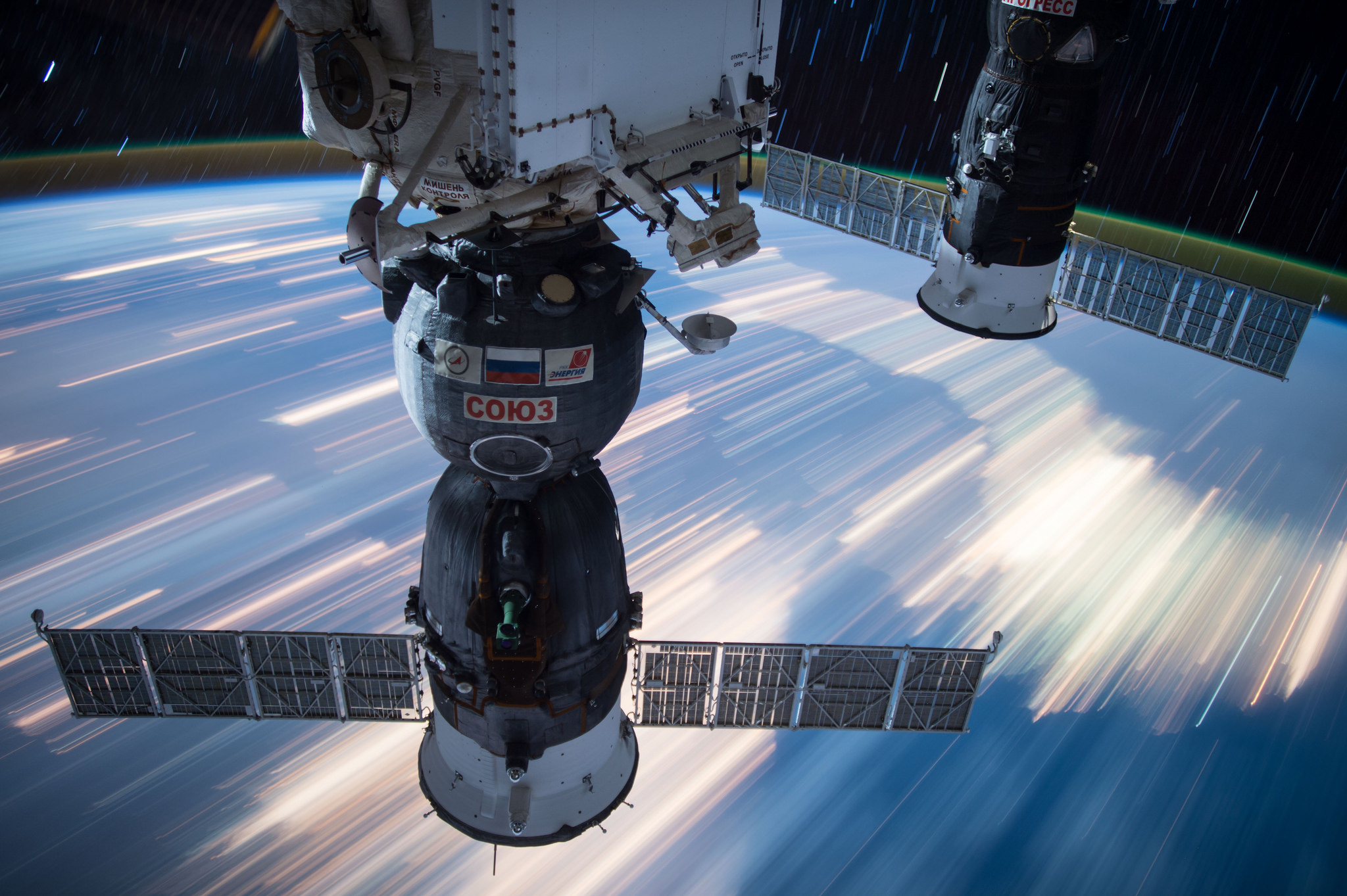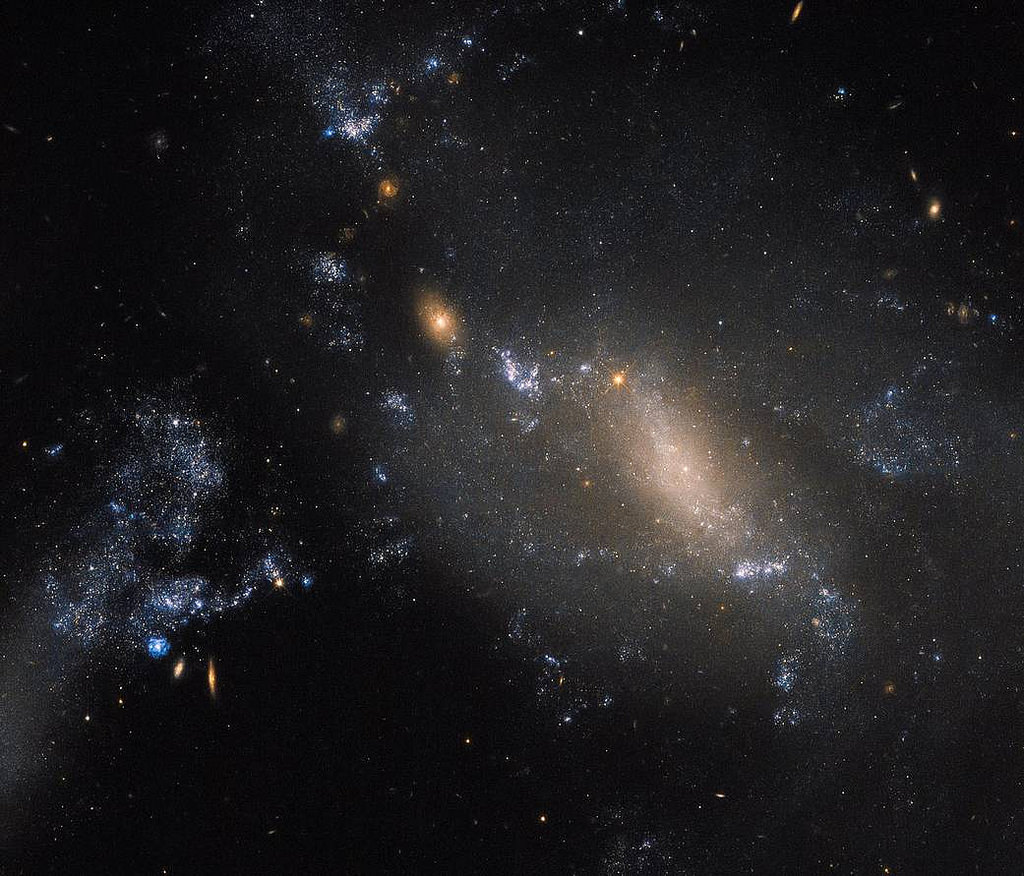Space Image of the Day Gallery (March 2017)
EchoStar 23 on the Launchpad
Wednesday, March 15, 2017: A SpaceX Falcon 9 rocket stands tall at the Kennedy Space Center in Florida three days before the planned launch of the EchoStar 23 communications satellite. This will be SpaceX's second mission to launch from NASA's historic Pad 39A. It is scheduled to blast off early Thursday morning (March 16) between 1:35 and 4:05 a.m. EDT (0535-0805 GMT). — Hanneke Weitering
Launching in the Moonlight
Thursday, March 16, 2017: The EchoStar 23 satellite soars into space atop a SpaceX Falcon 9 rocket in this long-exposure photo taken during its middle-of-the-night launch. At about 2 a.m. EDT (0600 GMT) today, the rocket blasted off into a moonlit sky from NASA's historic Pad 39A at the Kennedy Space Center in Florida. — Hanneke Weitering
St. Patrick's Day Aurora Shimmies Over Alaska
Friday, March 17, 2017: Happy St. Patrick's Day from Space.com! Astrophotographer John Chumack captured this stunning green and purple aurora over a mountain range near Fairbanks, Alaska on March 19, 2015. The bright green light display gives the snow-covered landscape a mint-green hue. — Hanneke Weitering
Dragon and Soyuz
Monday, March 20, 2017: The International Space Station's Canadarm robotic arm holds SpaceX's Dragon cargo capsule before releasing it to fall back to Earth. A Russian Soyuz spacecraft used to transport crewmembers to and from the space station is docked to the left at the Rassvet module. These are the only two kinds of spacecraft that return to Earth without burning up in the atmosphere. The Dragon cargo ship splashed down into the Pacific Ocean at about 10:48 a.m. EDT (1448 GMT) on Sunday. — Hanneke Weitering
Comet 41P's Galactic Encounter
Tuesday, March 21, 2017: Comet 41P/Tuttle-Giacombini-Kresák zooms past the barred spiral galaxy NGC 3198 in this photo taken by astrophotographer Chris Schur on March 14. At the time, the glowing, green comet was about 16 million miles (25 million kilometers) from Earth. This "April Fool's Day Comet" will make its closest approach on April 1, passing within 13.7 million miles (22 million km) of the Earth. NGC 3198, also known as Herschel 146, may appear close by, but it lies 47 million light-years away in the constellation Ursa Major. — Hanneke Weitering
A Breached Dam on Mars
Wednesday, March 22, 2017: Uzboi Vallis is a long valley on Mars that scientists believe was once filled with running water before being temporarily dammed by the rim of a freshly formed crater. It was subsequently drained when water levels rose over the top of the dam, creating a breach. Layers of sediment deposits seen in alcoves throughout the valley and its tributaries contain a type of clay that is different from clays found in the rest of the valley, data from NASA's Mars Reconnaissance Orbiter reveals. Erosion from the lake's surroundings may have dumped this sediment here as the water drained out. — Hanneke Weitering
A Galactic Frisbee
Thursday, March 23, 2017: NGC 1448 is a spiral galaxy, but it looks more like a sparkling space frisbee. From our edge-on view of the galaxy, its round shape and spiral arms are difficult to discern. The Hubble Space Telescope's Wide Field Camera 3 captured this view of NGC 1448, which lies about 50 million light-years away in the constellation Horologium, or the Pendulum Clock. — Hanneke Weitering
Breaking space news, the latest updates on rocket launches, skywatching events and more!
Dextre's Hand
Friday, March 24, 2017: Astronaut Thomas Pesquet, who is taking a spacewalk at the International Space Station with Shane Kimbrough today, will be adding lubricant to the Latching End Effector, the "hand" at the end of the Space Station Remote Manipulator System, otherwise known as Dextre. — Hanneke Weitering
Two Soyuz Speed Over Earth
Monday, March 27, 2017: Two Russian Soyuz spacecraft fly over Earth's city lights with star trails overhead in this long-exposure photo taken from the International Space Station. Relative to Earth's surface, the space station travels at about 17,500 miles per hour (28,200 km/h). These two Soyuz spacecraft, which are docked at Russia's Poisk and Rassvet modules, delivered the current crew of six to the space station. One will return to Earth next month with NASA astronaut Shane Kimbrough and Russian cosmonauts Sergey Ryzhikov and Andrei Borisenko. — Hanneke Weitering
A Double Identity Crisis
Tuesday, March 28, 2017: These two interacting galaxies seem to have lost their identity when they met one another. Gravitational forces between them have distorted their figures so much that astronomers aren't sure how to classify them. The larger and more diffuse cloud of stars to the right is known as NGC 3447B, and the smaller galaxy to its upper left is NGC 3447A. NASA's Hubble Space Telescope used its Wide Field Camera 3 to capture this image of the galaxies, which lie 60 million light-years away in the constellation Leo. — Hanneke Weitering

Space.com is the premier source of space exploration, innovation and astronomy news, chronicling (and celebrating) humanity's ongoing expansion across the final frontier. Originally founded in 1999, Space.com is, and always has been, the passion of writers and editors who are space fans and also trained journalists. Our current news team consists of Editor-in-Chief Tariq Malik; Editor Hanneke Weitering, Senior Space Writer Mike Wall; Senior Writer Meghan Bartels; Senior Writer Chelsea Gohd, Senior Writer Tereza Pultarova and Staff Writer Alexander Cox, focusing on e-commerce. Senior Producer Steve Spaleta oversees our space videos, with Diana Whitcroft as our Social Media Editor.

